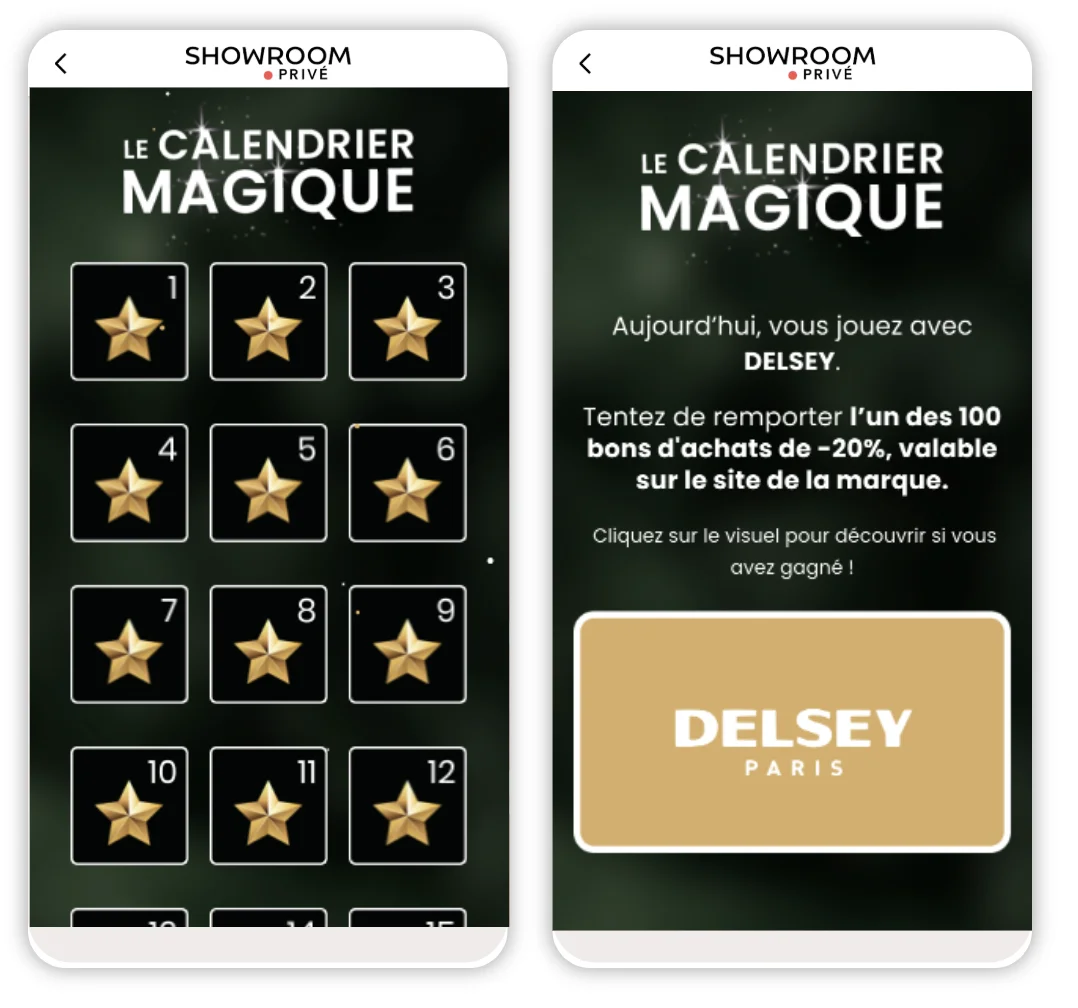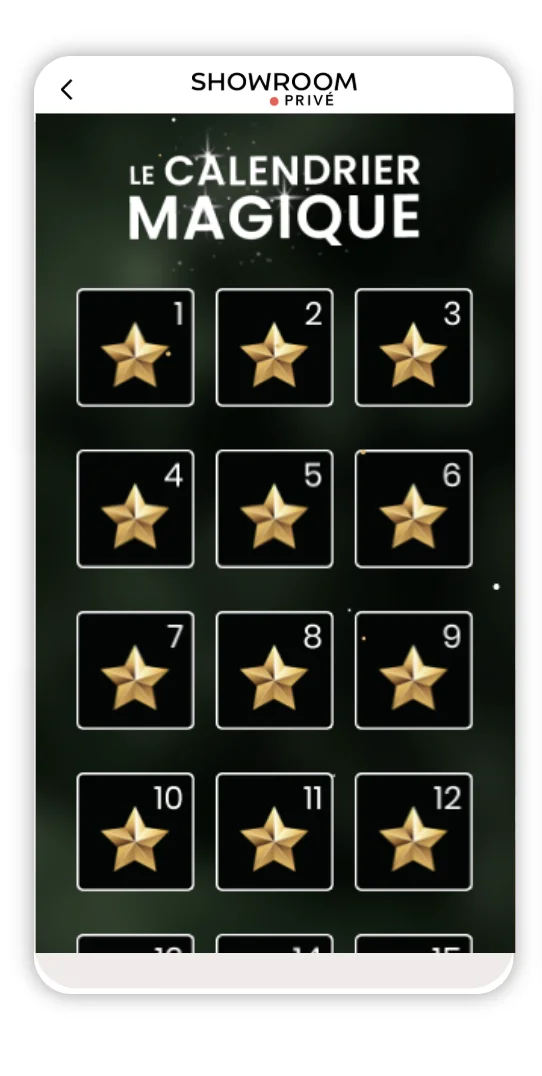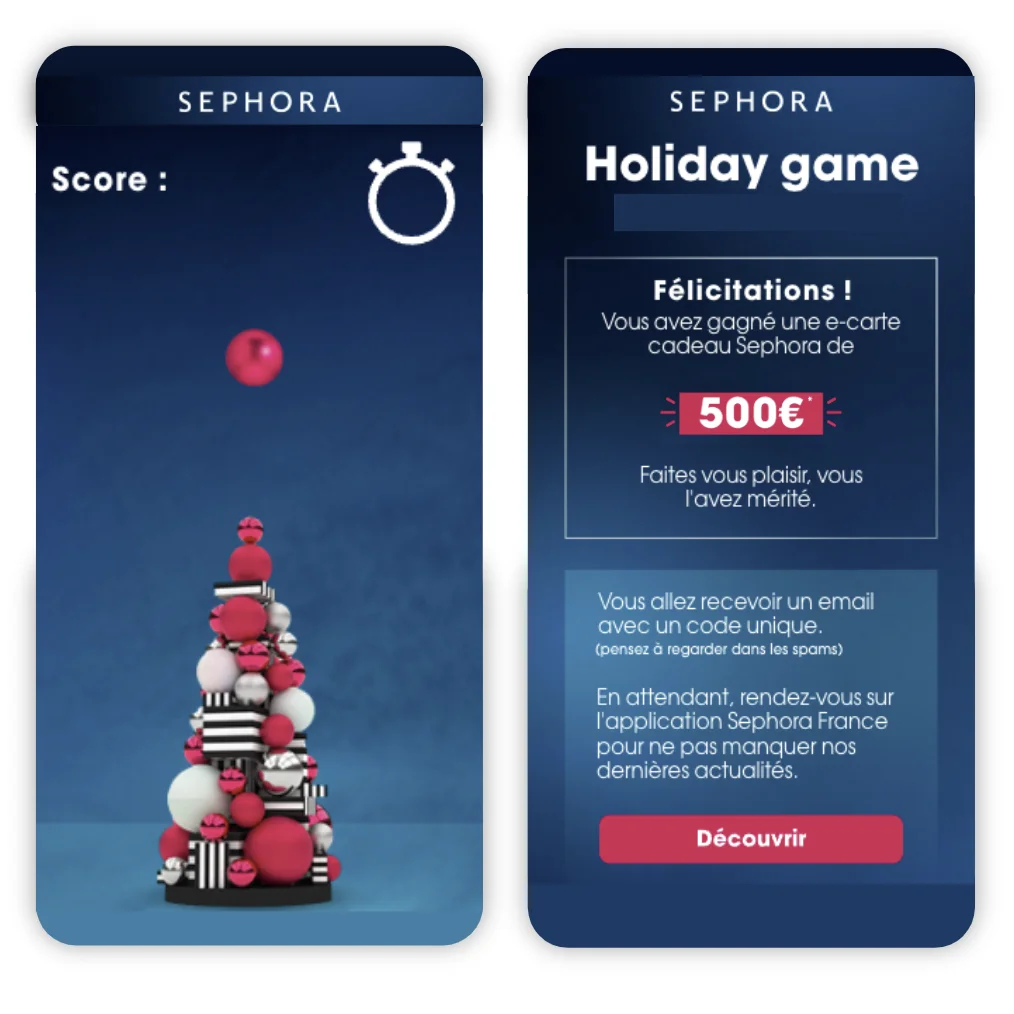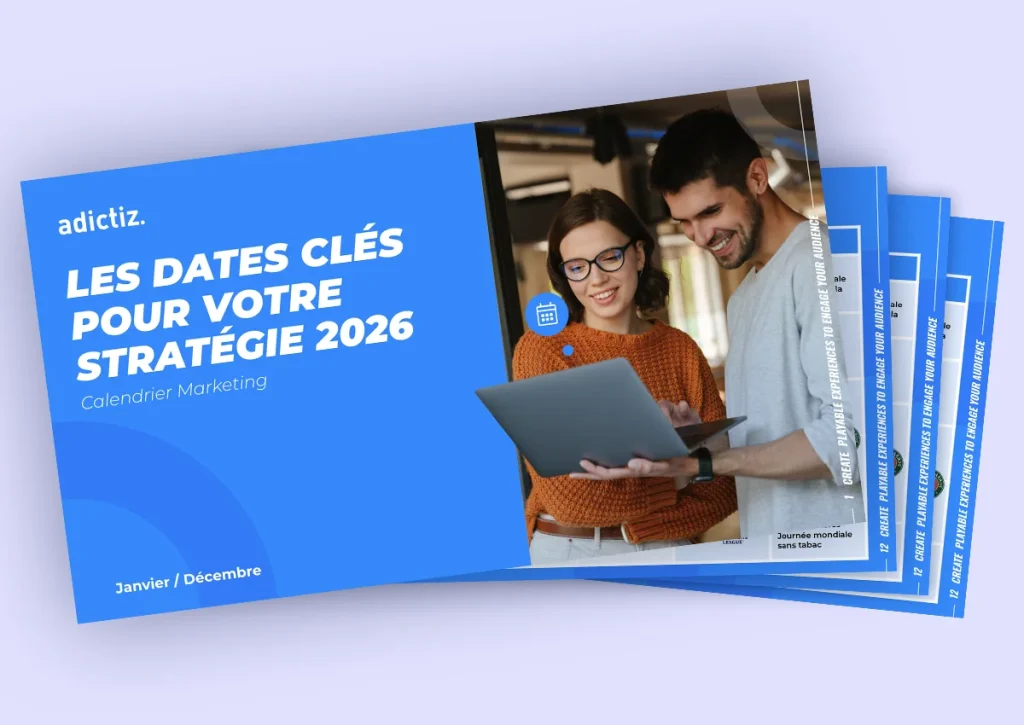Consumers spend time on their mobile devices to interact with brands and make purchases. Last year, almost 50% of sales were generated via mobile devices, a trend that continues to grow.
In this context, a mobile-first strategy is essential to capture attention and win market share. To attract and retain customers, marketing gamification (i.e. the integration of playful and interactive mechanisms) is a powerful lever.
In this article, we’ll share tips and examples for optimizing your mobile strategy and boosting user engagement through fun, interactive experiences.
Mobile first: Definition and key issues
“Mobile first” is an approach to web design and development that prioritizes the user experience on mobile devices. This strategy involves designing first for small screens (smartphones, tablets), then adapting content and design to larger screens (computers, televisions, etc.).
Adopting a mobile-first approach is essential for businesses, as the smartphone is the main gateway to the web for users.
For brands with an online presence, the challenges of mobile first are as follows:
Enhanced user experience
A mobile-optimized site offers fluid, fast and intuitive navigation that meets expectations. Users are looking for fast loading times, a clear, easy-to-use interface and content adapted to small screens.
Strengthening natural search engine optimization (SEO)
Search engines, starting with Google, favor mobile-friendly sites in their rankings. In France, 48% of searches are carried out via a smartphone, surpassing the 43% carried out on a computer. A mobile-first development strategy (to optimize loading times or display) increases brand visibility.
Increased conversion rates
A mobile-optimized experience reduces bounce rates and encourages users to make purchases or engage more with the brand.
The impact of gamification in a mobile-first strategy
The rise of mobile first has transformed expectations in terms of digital experience. Against this backdrop, gamification has emerged as a lever for capturing attention, improving navigation and prolonging engagement on a mobile application or site.
1. Improve user experience and navigation
Interactive game experiences make navigation more dynamic and immersive, adapting perfectly to mobile uses. Game mechanics not only make the experience more fluid, they also encourage greater interaction with the brand. Brands should therefore focus on games designed for mobile devices, whose tactile and instantaneous use encourages intuitive handling.
Example: An e-commerce site can integrate a Personality Test at the beginning of the shopping experience (which will be displayed on first connection after downloading the App). This quiz will identify the user’s preferences and guide them through the navigation process according to their needs.
2. Increase time spent on the application
By offering interactive and rewarding experiences, gamification encourages users to stay connected to the application or mobile site. Recurring games, such as daily challenges, encourage users to come back every day, strengthening the relationship between user and brand.
Example: to reduce its bounce rate and encourage users to return regularly, the brand can offer a recurring game (daily or weekly).
What gamification mechanisms can be used in a mobile-first strategy?
Gamification enables brands to meet their strategic objectives: awareness, engagement, conversion, retention, etc. By choosing playful mechanics, brands can move users up the mobile conversion funnel.
1. The digital Advent Calendar to build audience loyalty
One example of integrating gamification into a mobile-first strategy is the interactive Advent Calendar. This is an effective mechanism for engaging users during the month of December. Each day, the user opens a calendar box and discovers a promotion, a gift or a mini-game.
Showroomprivé launched an Advent Calendar on its app to maximize its visibility during this special time. Thanks to the promotion of partners, the operation generated a strong response from users, registering almost 500,000 entries. Engagement was also high, with 1.1 million boxes opened and 10.5 million page views, offering partners excellent visibility.
Note: Adictiz has enhanced the user experience of its Advent Calendar to meet mobile-first challenges. Brands can choose between two different displays: a landscape mode & a customizable portrait mode.


2. Playable Ads: interactive, engaging advertising
Playable Ads are ads integrated into applications or games, allowing the user to take part in a mini-game. These ads offer a playful, immersive experience that grabs the user’s attention, engaging them from the very first seconds. Adapted to small screens, Playable Ads are designed to be intuitive, encouraging fluid interaction.
3. Instants Gagnants on Mobile In-App: real-time rewards
Instant Win is a mechanism by which users can earn rewards after playing a game or completing an action. On mobile, these games are integrated into applications, encouraging interaction. They can be used to reward regular users and offer them benefits such as
(discounts, free shipping, etc.).
For the festive season, Sephora has launched a multi-country, multi-language game campaign (discounts, free shipping, etc.).
The aim: to generate traffic and boost awareness of the gift cards, while guaranteeing an engaging customer experience, via a form located after the game. This activation also acted as a recruitment lever, encouraging participants to download the Sephora app.


4. Story games: gamification on social networks
Story-based games are popular on social platforms like Instagram, Facebook, and Snapchat. Brands use stories to create fun and engaging interactions (in the form of a Poll or Quiz). The interaction takes just a few seconds, keeping the audience in touch without being intrusive.4. Story games: gamification on social networks
5. In-store QR codes: linking the physical and mobile experience
In-store QR codes are a way of gamifying the physical shopping experience while remaining mobile-first. Customers scan a QR code printed on the item label or receipt to unlock games, exclusive offers, or online competitions. This approach boosts the experience by creating a bridge between physical and digital sales channels.
3 tips for a successful mobile-first campaign focused on gamification
For a successful mobile-first campaign using gamification, it’s crucial to master game formats while optimizing the user experience. Here are three tips to maximize the impact of your mobile games.
1. Deliver a fluid, immersive mobile experience
2. Create a sense of immediate reward and urgency
3. personalize the experience to reinforce engagement
Conclusion
For a successful mobile-first campaign, it’s essential to create a fluid experience, keeping users engaged. Gamification enables you to maximize interaction with your audience and strengthen their loyalty. Discover our fun, mobile-first mechanics and maximize the impact of your mobile marketing channels.








